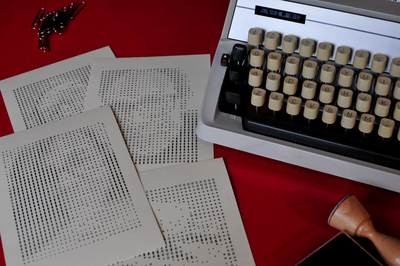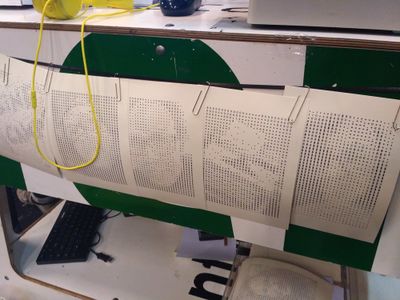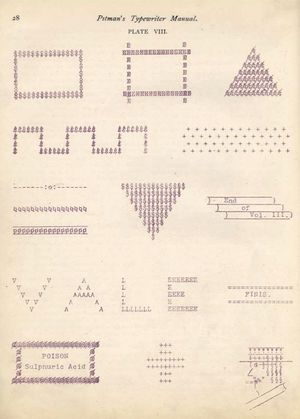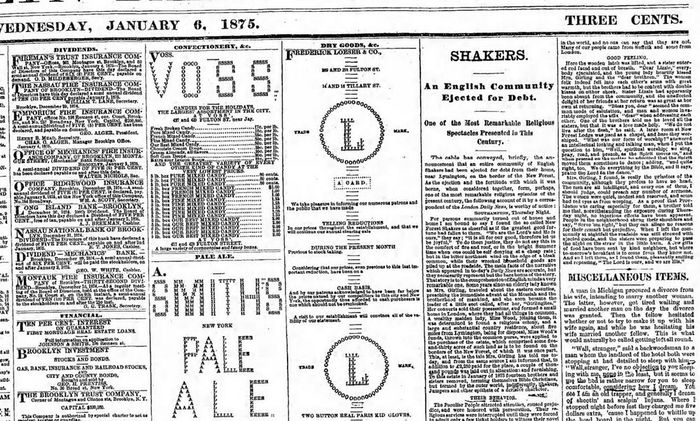Text Images
Text Images
Group: WDK17-MHP-El2
Dates: 22Jan-2Feb. Tuesday - Friday. 13:00-16:00.
Room: BL-1.3
Description
The following elective will be based on the project Excelfie by design Lucia Dossin, where selfie (images), captured by a digital camera are converted onto plain-text files (ASCII-art). In these text-based images, the sequence of pixels of the captured images is mapped onto corresponding text characters, in order to create text-based rendition of the original bit map image.
Announcement text
What are digital (bit-map) images? In their simpler form nothing more but sequence of pixels, each with its color value, organized into lines and rows. Such form of representing image information is uncannily similar to how text is represented digitally: a line-by-line sequence of characters, each with its corresponding value (code point). Can this similarity be used to transform pixel-based images into similar looking images made solely by text? And what happens when we reverse the process and try to get the text-based images into pixels using Optical Character Recognition software?
Material
We will work towards the implementation of the Excelfie in the Publication Station, for which we'll use:
- raspberry Pi
- camera (webcam)
- LCD screen (HDMI input)
- headphones
- typewriter
{{#widget:Youtube|id=UBX2QQHlQ_I}}
Organization
Keyboard and encoding
ASCII Art
- ASCII & Plain text
- origins of ASCII encoding
- previous encodings
- current encoding: Unicode
Typewriter Art
- vitality of type writer art
Bit maps:
- sequences of pixels
- color depth
Plain-text image formats
Capturing images
Assembling All Together
ASCII
ASCII encoding
- Previous encoding schemes: Baudot code
- Ascii table: printing and non-printing characters
- 7-bits in 8-bit bytes
Links:
http://worldpowersystems.com/J/codes/baudot.GIF
ASCII Art
ASCII art is text art created with ASCII, a protocol established by the American National Standards Institute (ANSI), which is America's representative to the International Organization for Standardization (IOS). ASCII art uses ASCII text characters to produce images. The emoticon, an element of text messaging and email, is an example of ASCII art at its most popular and functional. [1]
Ascii Art as an idea coalesced into existence bceause people
wanted more. They wanted more than just your standard Hercules display Atari or your Monochrome Commodore 64. To meet this demand, one singular artist, whose name is lost to the annals of history decided to take the plunge. Instead of text, he (or she) had the ingenuity to use the characters /, \, |, -, _ and whatever else came to mind to create words. An amazing idea. [2]
ascii-art software
Exercises: using the command line tools create several ASCII art "images". Send them to other users, save it to files, print it (dot-matrix).
- figlet - display large characters made up of ordinary screen characters
- cowsay - cowsay/cowthink - configurable speaking/thinking cow
- jp2a - convert JPEG images to ASCII
Typewriter Art
A vibrant area of graphic exploration.
A predecessor of ASCII
Bit maps
Exercise: Use imagemagick to convert a binary bitmap (jpg or png) to a plain text bitmap (.xpm) under different color depths
bit maps: sequences of pixels
<ref>Bourke, Paul. n.d. ‘A Beginners Guide to Bitmaps’. Accessed 2 January 2018. http://paulbourke.net/dataformats/bitmaps/.<ref>
color depths
- 1-bit color (2 colors): monochrome, often black and white,
- 2-bit color (4 colors)
- 3-bit color (8 colors)
- 4-bit color (16 colors)
- 5-bit color (32 colors)
- 6-bit color (64 colors)
- 8-bit color (256 colors)
- 8-bit greyscale (256 grey colors): each pixel represents only an amount of light (intensity information)
- 12-bit color (4096 colors):
- 24-bit True color (16777216 colors): 256 shades of each color channel red, green, and blue
plain-text image formats
Capturing camera input
Assembling it all
references
- ↑ ‘ASCII ART’. n.d. Accessed 2 January 2018. http://artscene.textfiles.com/information/ascii-newmedia.txt
- ↑ Necromancer. 1998. ‘History of the PC Ascii Scene’. March 1998. http://artscene.textfiles.com/history/essays/pcascii.txt
‘Ascii vs. Binary Files’. n.d. Accessed 2 January 2018. https://www.cs.umd.edu/class/sum2003/cmsc311/Notes/BitOp/asciiBin.html.
Borzyskowski, George. n.d. ‘THE HACKER DEMO SCENE AND IT’S CULTURAL ARTIFACTS’. Accessed 2 January 2018. http://artscene.textfiles.com/history/essays/borzysko.txt.
‘Digital Art Guild - Portait of the Artist as a Young Scientist by Ken Knowlton’. n.d. Accessed 2 January 2018. http://www.digitalartguild.com/content/view/26/26/.
Ippgi. n.d. ‘History of the Scene: The Beginnings of the IBM-PC Underground’. Accessed 2 January 2018. http://artscene.textfiles.com/information/history.html.
Thomas, Matthew. n.d. ‘Welcome to Ascii-Art’. Accessed 2 January 2018. http://artscene.textfiles.com/information/faq-altasciiart.txt.



